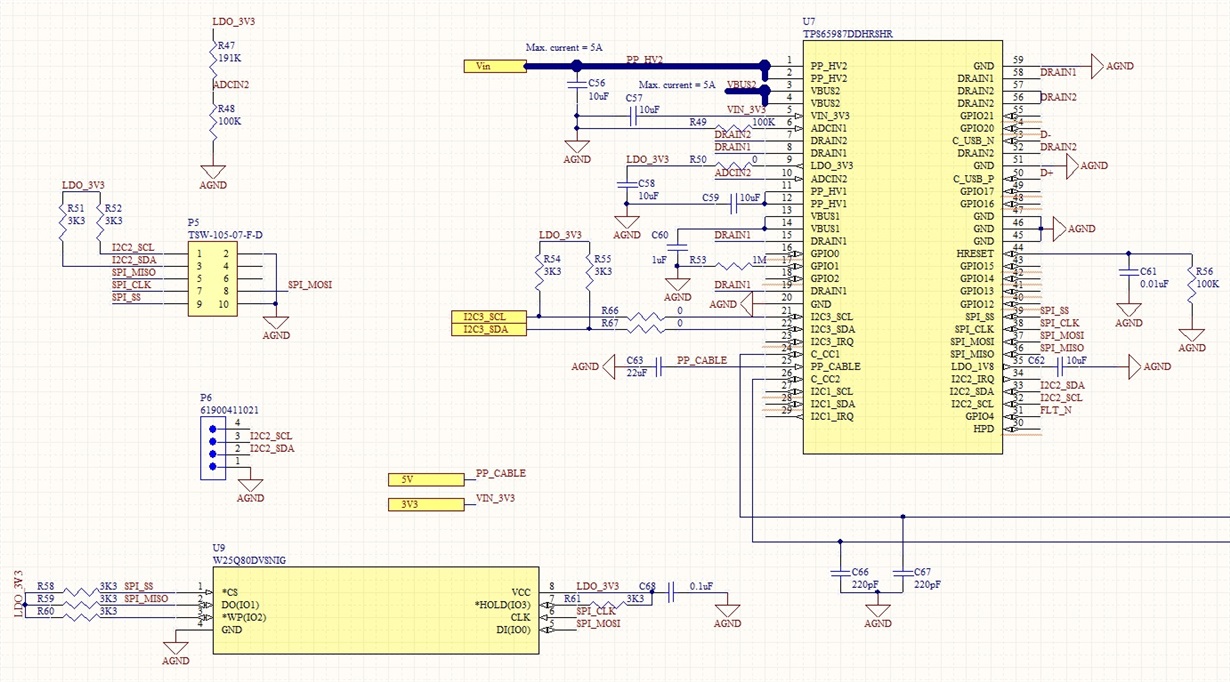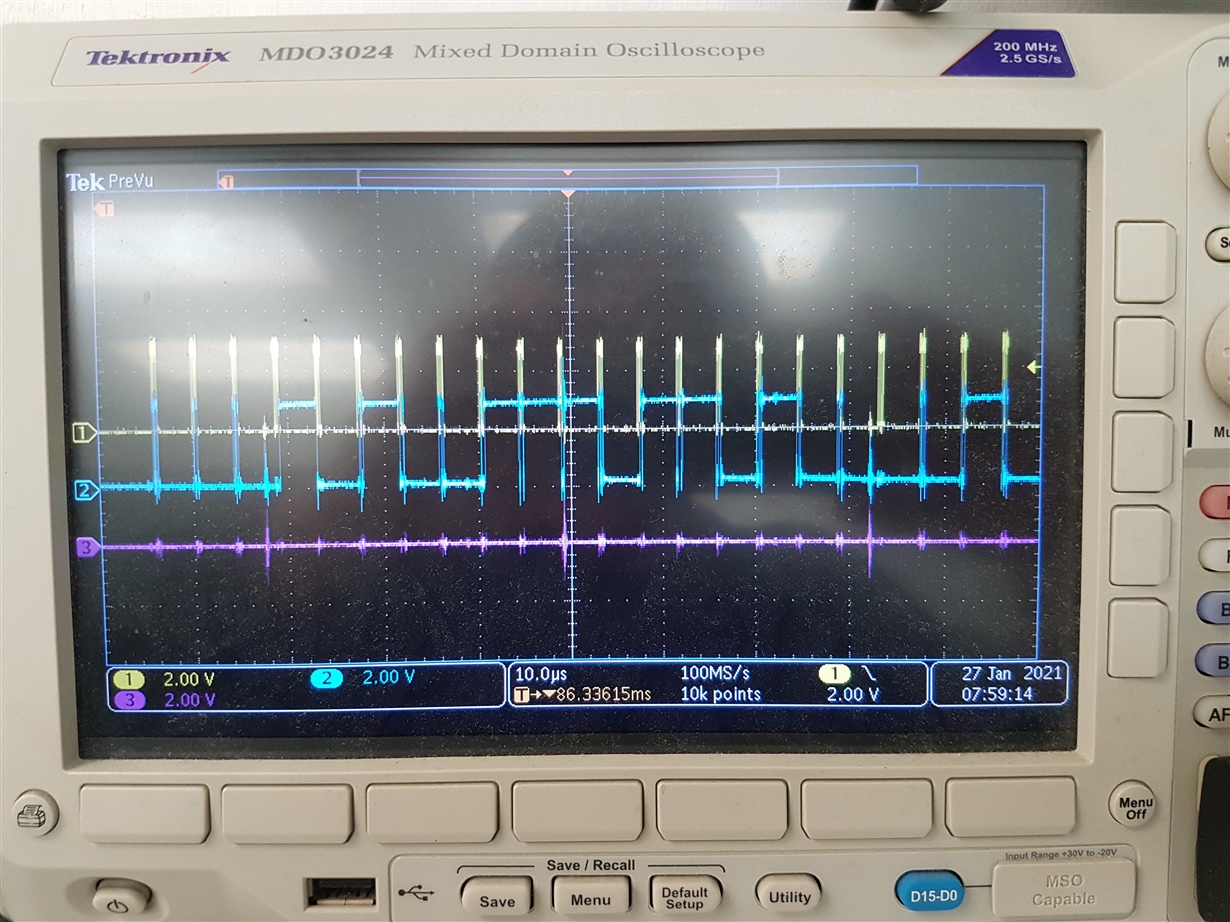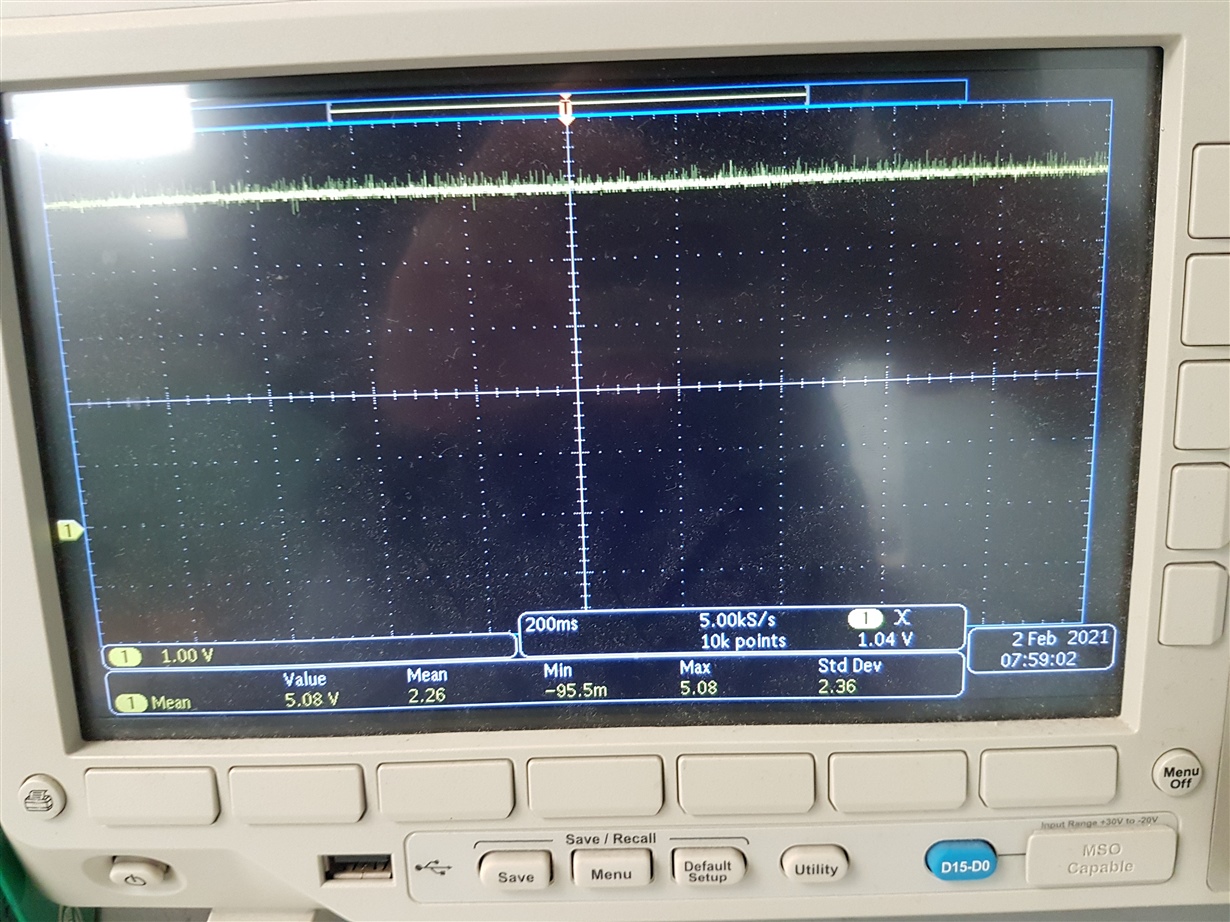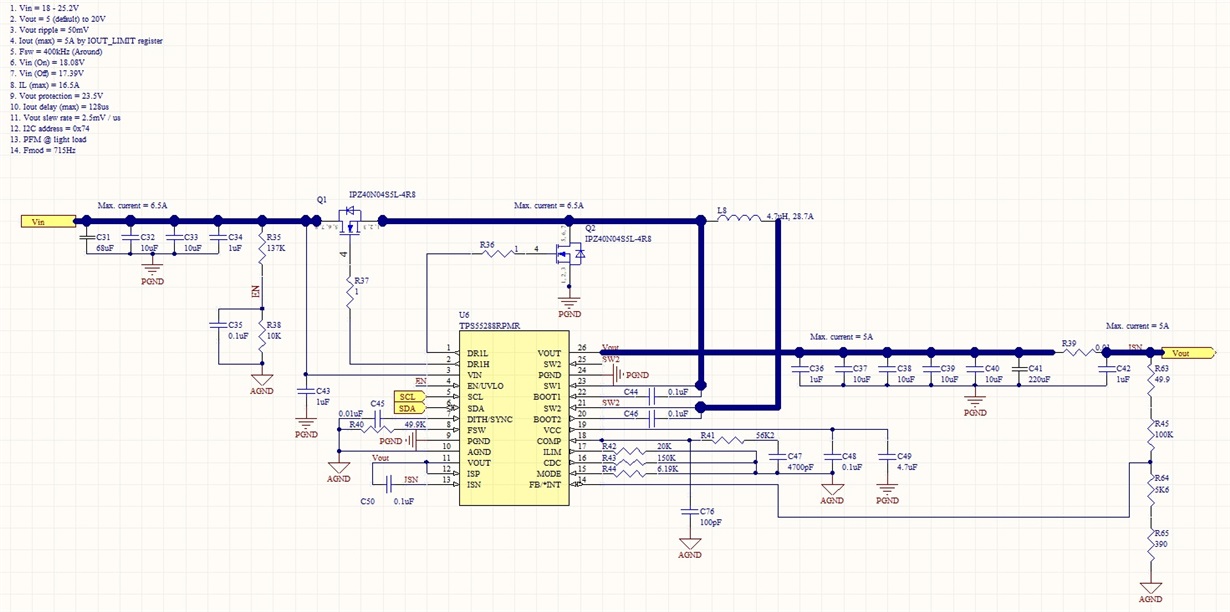Other Parts Discussed in Thread: TPS55288, TPS25750, TPS65987
Hello,
At this moment, I am debugging my own design PCBA that includes TPS65987D and TPS55288. I set the TPS65987D to be DFP, source and 4 PDOs source capabilities using application customization tool. The TPS65987D can initialize the TPS55288 and set it as 5V by I2C3 port. In addition, the VBUS can also output 5V and one of the CC pin is pulled to 1.6V from 5V once the USB type C loading is inserted. However, the TPS65987D never send out its source capabilities to the loading. Do I set anything wrong in the application customization tool? My application customization project file is also attached here for reference. Would you help to check anything I missed in the setting? Thank you!!
Thank you for your help!
Best regards!
Alanproject3.pjt





